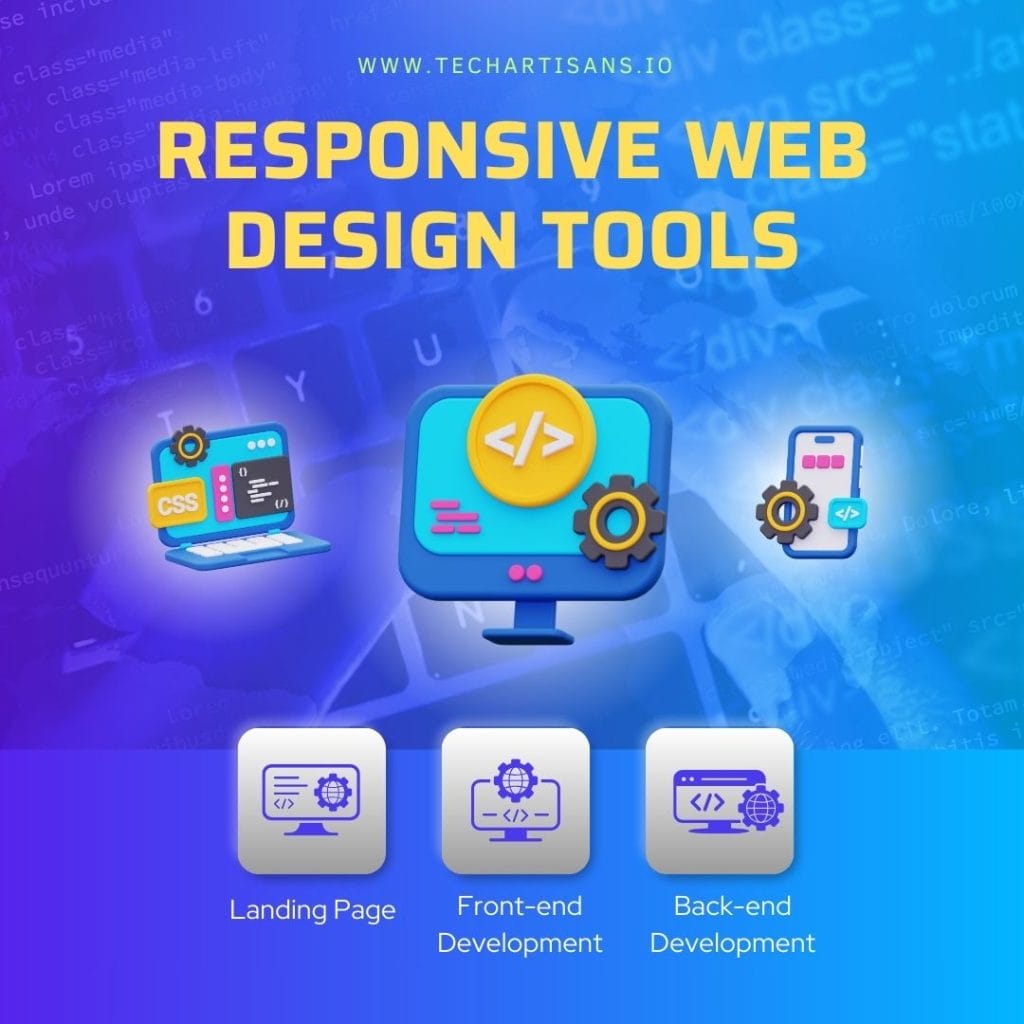In order to answer this question, first you need to understand what a mobile site is.
By understanding what a mobile site really is, you will be able to fully comprehend the importance and need for the mobile version of a website, and understand how crucial that is for the business and for your clients.
Mobile Friendly Site

A mobile-friendly site is simply a website designed for mobile devices.
When a user is surfing the internet on his mobile phone and he visits a website, the website detects the mobile device and redirects the user to the mobile version of the site.
Why a mobile site?
This mobile-friendly version of the same site is designed especially for these smaller screens to ensure a better user experience.
In this era of smartphones and mobile devices, nearly two-thirds of web traffic on any site is coming from a mobile device.
This mobile responsive web design enables mobile users to navigate through the site with ease.
Difference between a Mobile Device and other devices:

Most of the devices being used today are either mobile phones or desktop computers.
Conventional computers have bigger screens and
websites designed for them are designed accordingly.
On the contrary, Mobile devices are smaller and search engines detect these devices and redirect them to the mobile-friendly version of the websites.
Importance of Mobile-Friendly Web Design

During the past few years, the use of mobile phones all around the globe has increased exponentially. This changed the way websites were being designed over the past two decades. Web designers now have to design mobile-friendly websites.
Impact of Mobile-Friendly Website Design on Potential Customers
When potential customers search for a website on their smartphones, they immediately feel at ease if the website is mobile-friendly. They can navigate through the website more easily and enjoy an overall better user experience.
On the contrary, when the website is designed just for the desktop, they immediately feel discomfort because such a website is very hard to navigate on a mobile phone.
Mobile commerce and Customer retention:
Customer retention is a very important task for any business. So, In order for businesses and services to attract new customers, increase their retention rate and reduce their bounce rate, they must develop a mobile-friendly site.
A poorly designed website will shoo away the website visitors who are surfing on their smartphones.
Retaining the visitors on the website

Customer Retention:
Customer retention is simply the process of keeping the customers that your business already has. It is different from customer acquisition, but in this context, both are equally important to discuss.
How to retain customers:
Retaining visitors to a website is crucial for any business. Every year millions of dollars are spent by big companies and organizations on research and activities that are helpful in customer retention.
Getting new customers is costly because of the effort and budget that marketing requires.
Therefore it is in the best interest of any company to work on retaining the existing customers while they are getting new ones.
This can be done just by putting yourself in customers’ shoes and seeing your business and your website from their point of view. This helps to understand their perspective and their problems.
Putting yourself in the Customer’s Shoes:
Consider yourself as an example, you search for a local business on your smartphone and find it on the internet. You are excited to see it and you visit the website of that business and see that it is not even designed for smartphones. You can see it but you can’t properly navigate through it.
Frustrating isn’t it?
Why would you purchase something, or spend money on such a business? Would you even stay on the website for a good amount of time?
Or even if the mobile version of this site exists but you can’t effectively do anything on it because of the time it takes to load? The consumers are frustrated by such things, and rightly so.
So in order to retain online consumers and customers these days, the website must be mobile-friendly.
Most important aspects of a responsive website
A responsive web design means that websites are designed in a way that users from a variety of devices can access and navigate through the website easily.
From smaller devices like mobiles and smartphones to larger ones like Macs and desktops.
A visitor must not worry about the type of device he or she is using, but should just visit the website without any worry.
Important Aspects of a Responsive Website:

A responsive website must have the following elements:
- It must look good on all kinds of devices.
- Users must be able to navigate easily.
- All the relevant information must be available.
- Should have considerable whitespace.
Consequences of a Bad Website Design

A bad website harms the business like no other thing. When a website is poorly designed, it reflects on the business poorly.
A website is like the face of a business. If this face is poorly designed, customer retention and conversion rates are dropped down, and especially people who are new to the business think your business is not worth their precious time and hard-earned money.
Why avoid a bad website?
Today, most potential customers and consumers do their research online before spending their money somewhere.
A Potential customer searches everything online. From the perfumes, he wants to buy, to the hotels he wants to stay in.
Most people today do their research online.
So for example, if a potential customer visits your website and sees a blank screen, or the dropdown menu isn’t working, or the load time for pages is a few milliseconds too much, or the mobile version of the website isn’t available, or some crucial information is missing from a page, he or she will immediately bounce back.
A poorly designed website damages the business.
Search Engine Optimization:

What is SEO?
What is SEO? Search engine optimization is the optimization process of a website.
When a user types something in the search box of a search engine, the search engine then finds all of the relevant results and then display them to the user.
But here’s the thing, the search engine, before showing the search results to the user, ranks them according to their quality of content and their relevance and then lists them accordingly. The first one on the list is the most relevant and optimized, the second one is less than that, and so on.
The process of optimizing your website so that the search engine ranks it near the top is called search engine optimization.
In short, if a website is of good quality, the search engine will rank it accordingly.
SEO Strategy
So the best SEO strategy for any website is to enhance the user experience as much as possible.
A company must put in some time and effort to create a website that satisfies the user because lead generation, sale, revenue, and the overall reputation of a company depends on its digital presence.
A customer must never feel that something is missing from the website.
Characteristics of a Good Website:
- The website must be beautifully and sensibly designed
- The website must contain all the relevant information
- The website must be mobile-friendly considering the industry trends
- The websites used and designed by local businesses must encourage sales and revenue generation
- The website must be able to handle the traffic, this is included in the technical aspects of the SEO strategy
- Design-related issues such as page speed, traffic handling, information, buttons, and anything like that must be optimized and designed for the ease of users.
- The website must be designed to create ease for the users.
Android and iOS Applications:

In addition to the mobile version of the website, mobile applications for a business have also become important during the past few years.
Just like mobile websites, the importance of mobile apps can’t be denied. Apps are much easier to use and access, and considering how much people use smartphones in their daily lives now, a mobile app for a business is a must.
Apps are like easy go-to buttons. They serve almost the same purpose as a website, with some additional features that a website can’t have.
Why an app and not a website?
Having a mobile app for your business doesn’t necessarily mean that you can neglect the website. In fact, it is the opposite. A business should have both.
Yes sometimes the kind of app and the kind of website can vary with the nature of the business or the organization, but having them just increases your chances of getting noticed by the people.
People love the ease in their lives:
Consider apps like easy go-to buttons. Now the person who wants to access your business digitally, can open the website or open the app.
Now in order to open the website, he will first have to open the browser, type in the website name, or search the name of the business on google, then open the website, and then browse it and navigate through it to find the page of his desire and then proceed.
On the contrary, he can just open the app, by pressing a single icon and get access to all the information and features with just one click, specially designed for mobile devices.
Apps for businesses who sell online:
Businesses that also sell their products and services online should invest a good amount of effort and time in developing their apps.
Not only they can increase their revenue through it, but they can also actually increase their presence on the internet and create ease for their users. Their users and buyers won’t have to open a browser and then open a website every time they want to order something from the business, they can just have the app downloaded on their phone and they will only be a click away from your business.
For instance, businesses that sell clothing, electronics, gym equipment, or anything of daily use online, or the companies that are offering cab services, or food delivery services, would be best able to conduct their business and increase their revenues if their customers were accessing them through the apps and not the websites.
Answering the question:
Is the absence of a Mobile Site losing your clients?
To answer the question, yes it is. It is not only encouraging your existing clients to leave, but it is also discouraging the new ones to come. Clients want ease and satisfaction, they want their problems solved, and if they have to deal with your difficult website, on a browser, on a pc, or a laptop, it will only increase their problems and not decrease them.
What to do?
If you’re a business owner, big or small, you must first have a website and a digital presence. And after that, you must put some effort in improving this digital presence through SEO strategies, having a responsive website, having an app for your business if necessary, and anything else that makes the lives of your customers easier and not difficult.
By doing this, you will not only be increasing your revenue, but you will be improving the image of your business in the minds of the customer and, in general, in the market.
If you keep on improving your digital presence in this era, your business will inevitably be noticed by new customers, and old ones won’t leave for these web-related difficulties.







